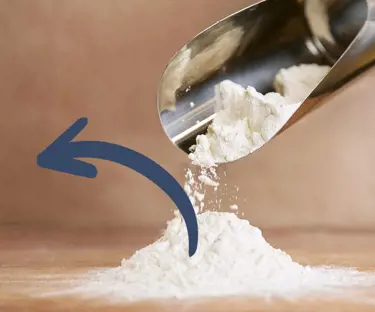To contend with the challenges of an ageing population, it is important to establish the best possible dietary framework to promote healthy and independent living.
Protein can play a vital role in ageing well1. For one thing, it can be an effective means of promoting satiety. As hunger is one of the biggest reasons people fail to stick to diets, high-protein foods can be incredibly beneficial for overweight and obese individuals.
Protein is also an essential part of tackling sarcopenia, which is a type of muscle loss that occurs as a natural part of the ageing process. Along with resistance exercise, ensuring optimal protein intake is incredibly important to maintaining muscle mass and reducing frailty and associated comorbidities in later life.
Protein for Life
Protein for Life, a UK-based partnership between the food sector and academia, was created to identify and develop guidelines for cost-effective, sustainable and enjoyable protein products for healthy ageing.
As part of our research, we looked at protein intake in UK-based individuals aged 50 and older. Muscle mass and strength declines rapidly after this age, but we found most of those we studied were failing to consume the Reference Nutrient Intake (RNI) for protein.
The UK RNI is currently 0.75g protein per kilogram of body weight. The International PROT-AGE Study Group and European Society for Clinical Nutrition and Metabolism (ESPEN), though, suggest the daily protein requirement for healthy individuals over 65 years should be 1.0–1.2g protein per kilogram of bodyweight.
This higher value is supported by a large body of new evidence, and an increase in intake of dietary protein for older age groups certainly merits further research.
While we are not saying that everyone should be supplementing their diets with protein, we do believe everybody should be at least meeting the recommended daily requirements.
Optimal intake
It is not just a case of eating the required amount of protein, though. Muscle protein synthesis (MPS) is crucial to fighting the effects of sarcopenia, and that depends on more than just protein quantity.
We know from studies published elsewhere that consuming two to three meals a day, each containing 25-30g of protein, is the best way to stimulate 24-hour MPS. Our research into over-50s, though, found that the morning period in particular tends to be protein poor.
Source is another key consideration. Beyond protein’s health impacts, our research has looked at environmental sustainability and suggests consumers should look to incorporate more plant-based sources into their diets.
Nonetheless, that can bring challenges because protein quality is another vital part of MPS. We know that animal sources have a more complete composition of essential amino acids, which are the building blocks of proteins. They tend to have high digestibility and bioavailability, and these are important factors when moving towards a healthy and sustainable diet.
If consumers are getting most of their protein from plants, it means they need a range of sources such as peas, beans and pulses to optimise that amino acid profile.
Increasing consumer awareness
With many older consumers failing to get the recommended amount of protein on a daily basis, Protein for Life is exploring ways the food sector can raise awareness of the importance of optimal intake.
As part of this, it is important to help consumers understand that there are a range of sources that can contribute.
When you talk about protein, the focus is often on meat and poultry, but there are many other options. Along with plant proteins, there are opportunities for consumers to add more dairy-based sources into their diets. Whey protein, for example, is an excellent choice in terms of its ability to support MPS.
If you talk to consumers about which products might be high in protein, whey proteins are frequently identified as a source that is common to their eating patterns. That recognition is incredibly important when trying to get people to maximise their protein intake for health.
By introducing a wider range of high-quality protein sources into their diets, it means consumers are better equipped to ensure optimal intake, helping them to preserve muscle and maintain their independence in later life.
Citations
1 Lonnie, M.; Hooker, E.; Brunstrom, J.M.; Corfe, B.M.; Green, M.A.; Watson, A.W.; Williams, E.A.; Stevenson, E.J.; Penson, S.; Johnstone, A.M. Protein for Life: Review of Optimal Protein Intake, Sustainable Dietary Sources and the Effect on Appetite in Ageing Adults. Nutrients 2018, 10, 360.
This blog contains material and information intended for B2B customers, suppliers and distributors, and is not intended as information to the final consumers.


